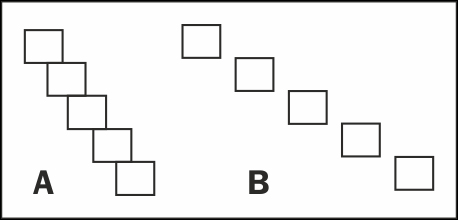SLS fuses small particles of material (plastic, metal, ceramic, or glass) using a high- powered laser. The technique is similar to SLA printing in such a way that the laser traces the cross-sectional shape before a platform descends. Perhaps the biggest advantage of SLS printing is that the granular material supports the top layer of material, giving rise to part geometry not previously possible using SLA printing without some sort of supporting structure created underneath the model.
An example of this is illustrated in the following image in the printing of one side of an inverted two-dimensional triangle. If the internal angle of the pyramid is low, there is enough material in the bottom layer for the current layer to sit on top (B). However, by increasing the angle, we eventually reach a point where none of our current layer is sitting on top of the bottom layer, but rather is floating in space as seen in A in the following image:

FDM printing
In SLS printing, the top layer will sit on unsintered powder, whereas with SLA printing, the layer will fall to the platform, ruining the print.
It took a number of years before an SLS printer came to the market, in which time S. Scott Crump invented, patented, and brought to the market Fused Deposition Modeling (FDM) and later went on to co-found Stratasys.
